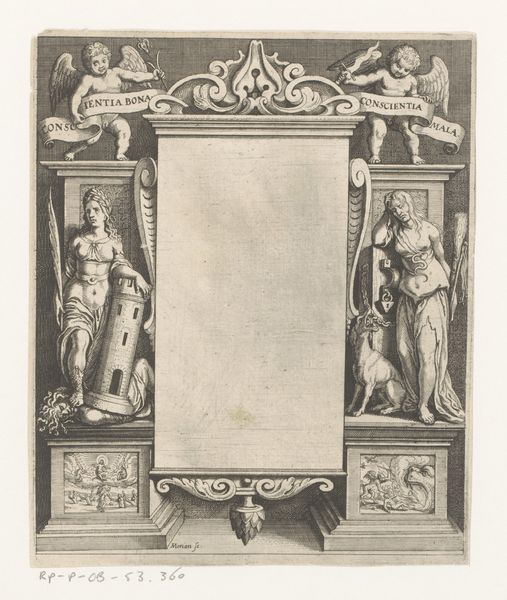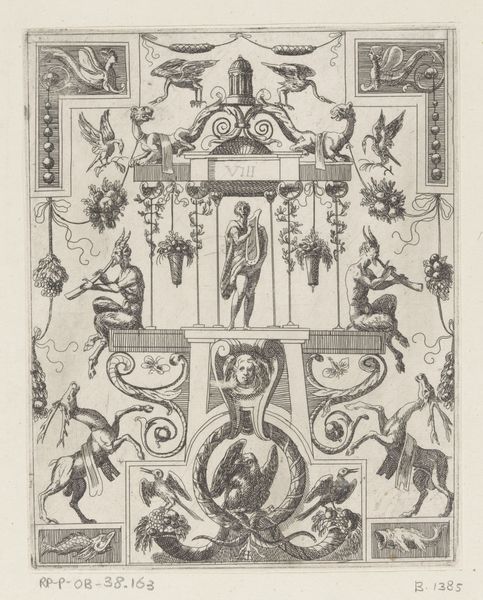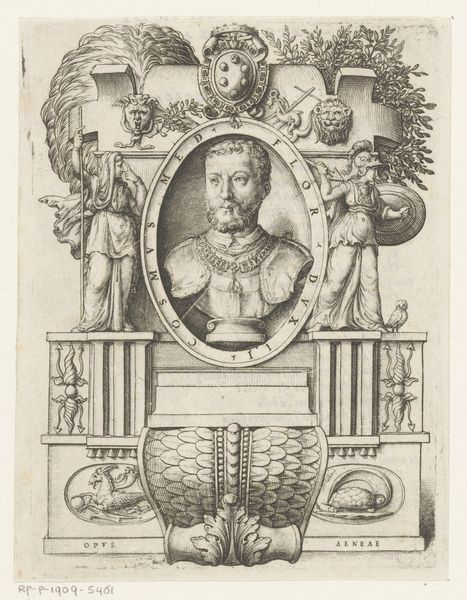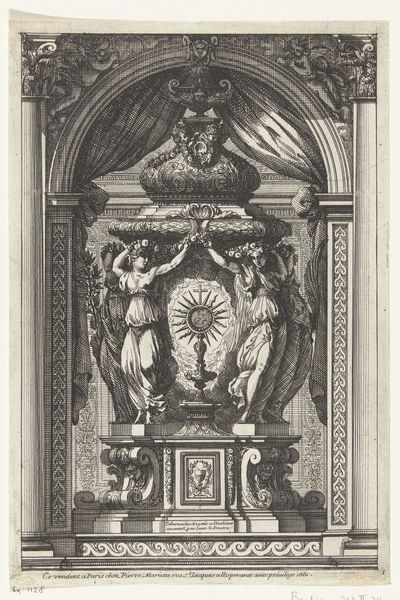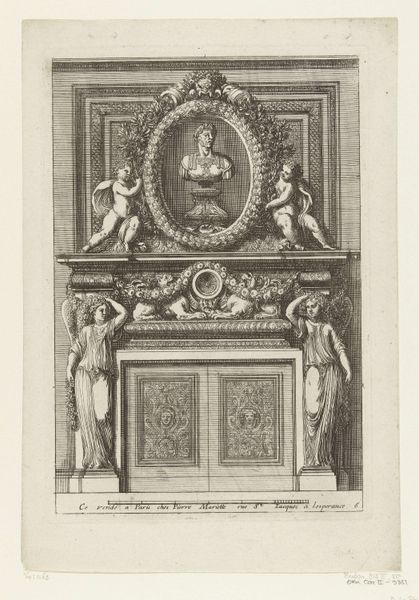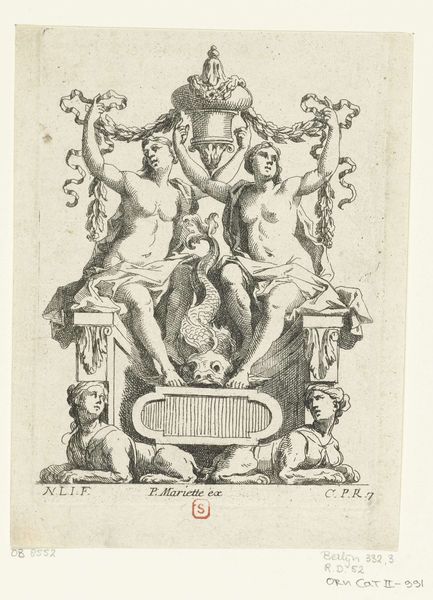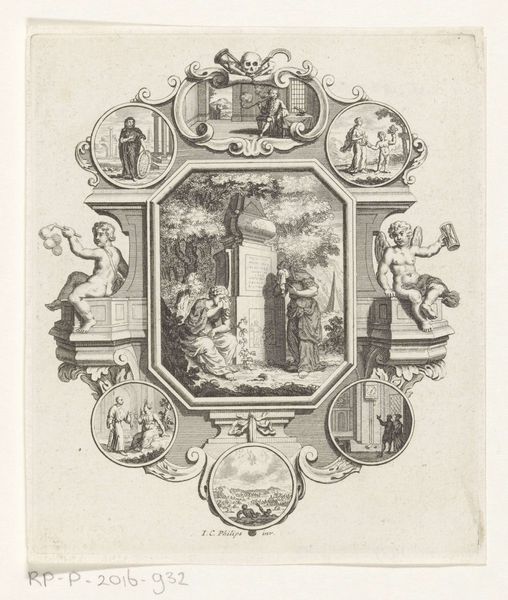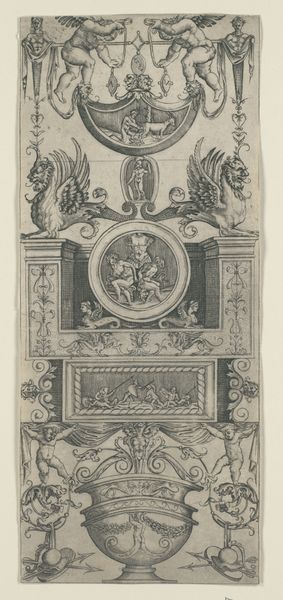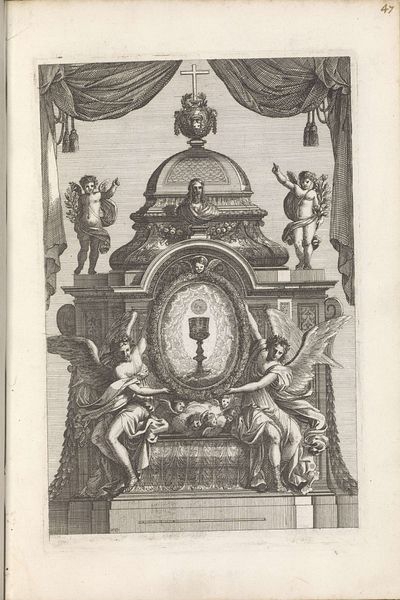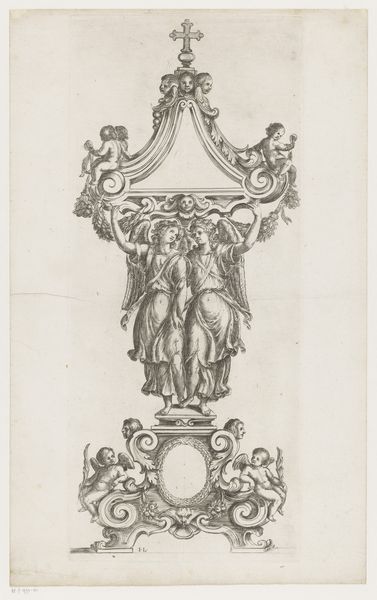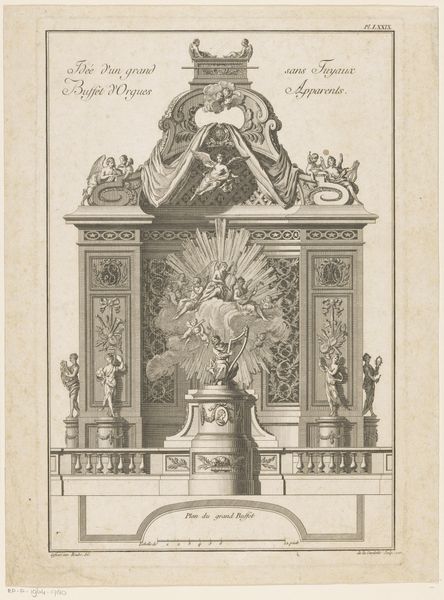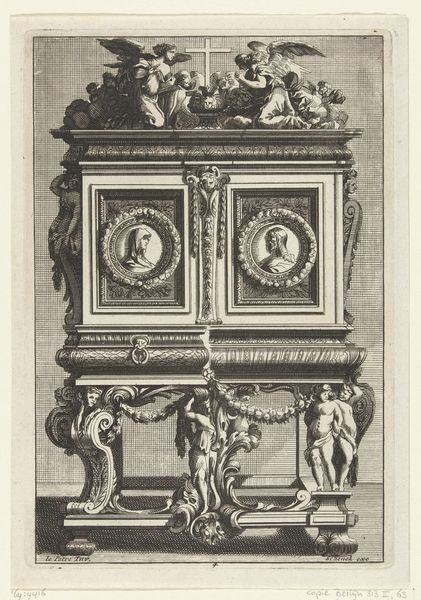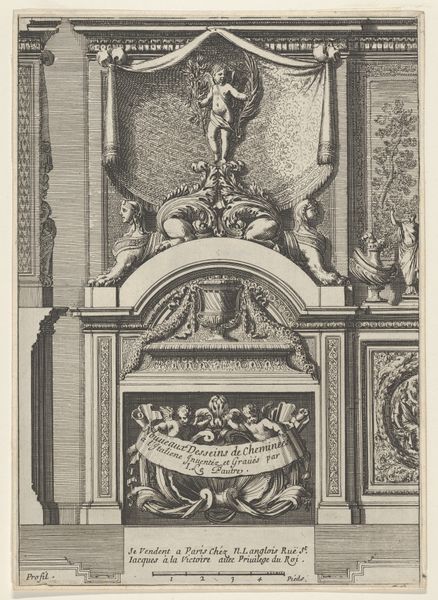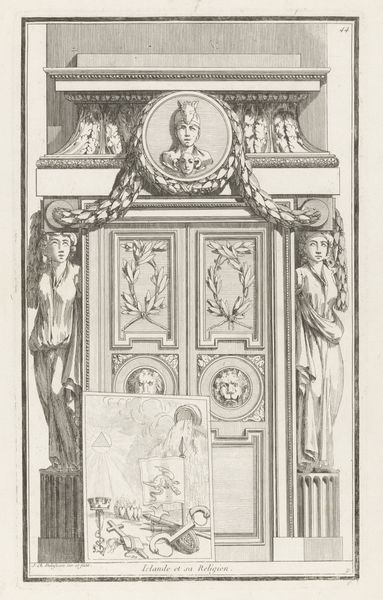
Architectonisch object met het portret van Odoardo Farnese, hertog van Parma en Piacenza 1706 - 1796
0:00
0:00
print, engraving
#
portrait
#
baroque
# print
#
old engraving style
#
history-painting
#
coin
#
engraving
Dimensions: height 186 mm, width 143 mm
Copyright: Rijks Museum: Open Domain
Editor: This is Giuseppe Pini’s “Architectonisch object met het portret van Odoardo Farnese, hertog van Parma en Piacenza,” an engraving from sometime between 1706 and 1796. I'm immediately struck by its ornate structure; it seems to glorify Odoardo Farnese, but it's more than a simple portrait. What do you see in this piece? Curator: I see a potent articulation of power and identity within the framework of Baroque symbolism. Let’s consider Odoardo Farnese within the context of his era. How did his image, meticulously crafted here, function to solidify his rule? Editor: I guess it shows him as a powerful leader, literally set on a pedestal with those two big coins! But why the object on the other coin with three people on it? Is that some reference to antiquity? Curator: Exactly. The visual language here constructs Odoardo's authority through historical and mythological allusion. This wasn’t just about depicting a likeness; it was about constructing a narrative of legitimacy. The juxtaposition of his portrait with those classical references invites viewers to align Farnese with established legacies of power. It prompts the questions: who is included in that narrative, and who is excluded? How did it serve to legitimize the Farnese dynasty’s position at the expense of other marginalized groups? Editor: So, the engraving is not just a picture, but an argument for power, made through careful choices about what symbols to use? Curator: Precisely. It is crucial that we examine it with a contemporary critical lens, unveiling the underlying power dynamics it perpetuates. What have you learned about the image after this discussion? Editor: That there’s a complex relationship between the construction of identity, the appeal to history, and the maintenance of power that’s been shaped over time.
Comments
No comments
Be the first to comment and join the conversation on the ultimate creative platform.
